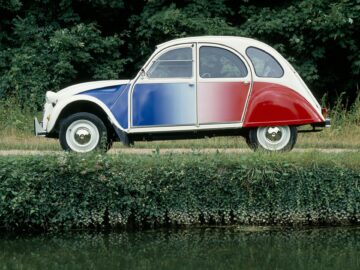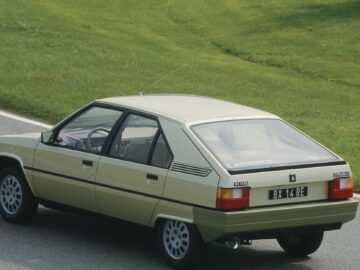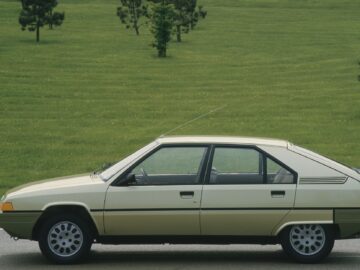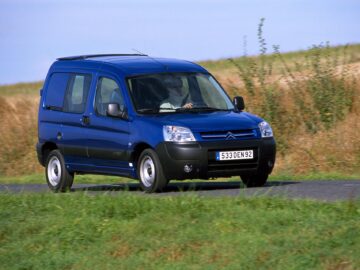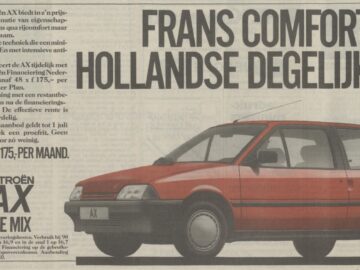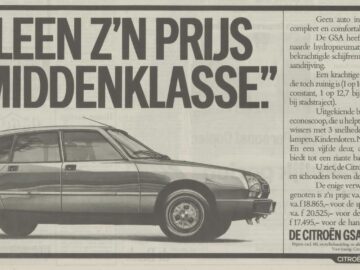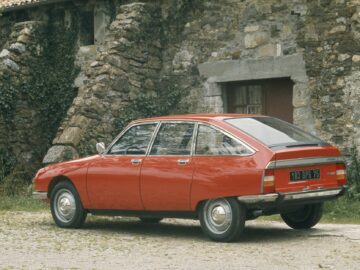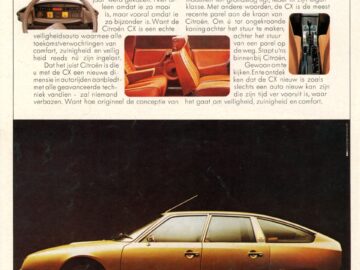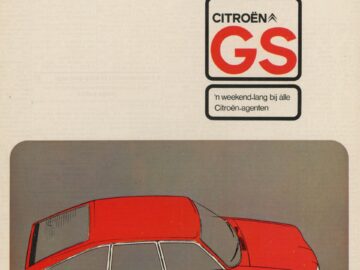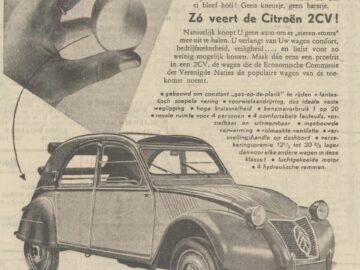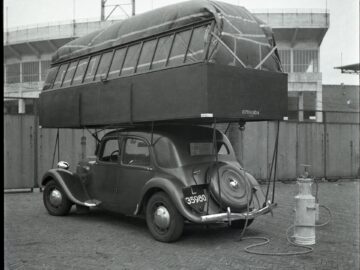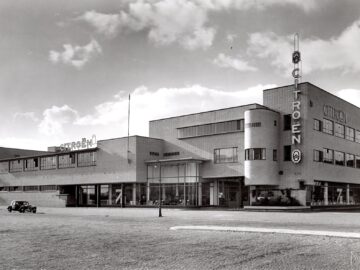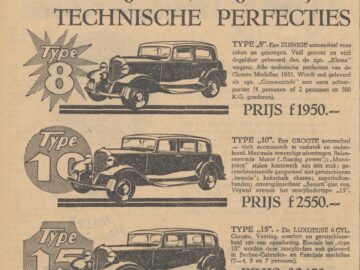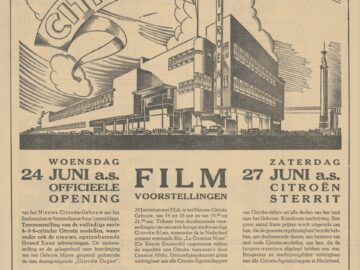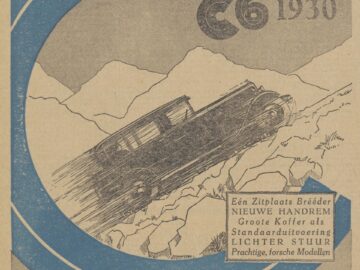Citroën celebrates 100 years in the Netherlands!
Advertisement from October 15, 1924
The founding of Citroën Nederland marks an important moment in the history of the French marque.
In the official advertisement published on October 15, 1924, we read, “We have the honor to inform the honored public that on October 2, 1924, the Nederlandsche Naamlooze Vennootschap Automobiles Citroën, established at Amsterdam, Weteringschans No. 81/89, at the head of which is appointed Director under the responsibility of the Board of Directors, Mr. R. Van Mill Jr. of Amsterdam, was founded.”
André Citroën
The creation of Automobiles Citroën realized the plan of André Citroën – founder of the brand – to carry out in-house sales of Citroën models in the Netherlands.
Soon after, the brand soon began publishing advertisements in national newspapers to put Citroën on the map in all provinces.
A 1925 ad about the 10 P.K. reads, “The 10 P.K. Citroën can easily compete with cars of lesser strength because of its low consumption and maintenance costs. The 10 P.K. is equipped with balloon tires.”
The new price of the 10 P.K. Citroën at the time was 2,100 guilders.
The three-seater 5 P.K. Torpedo – also equipped with comfortable balloon tires – had a starting price of 1,700 guilders.
As a two-seater, it was 1,475 gulden.

Focus on comfort, even then
Even in 1925, it was clear that making mobility accessible to the general public and providing comfort were high priorities for Citroën.
“The motto of Citroën is still economy, comfort, speed and safety,” stated an advertisement published in 1925.
Citroën’s popularity in the Netherlands grew steadily and soon a list of officially appointed agents was compiled, giving Citroën a nationwide network.
Citroën employed catchy slogans in advertisements: “Spring Surprise!”, “‘N Citroën for the price of a motorcycle with sidecar”, or “An offer you should seriously consider.”
Citroën continued to grow and established a strong position in the Dutch street scene.
Not only with passenger cars, but also with commercial vehicles.
To manage the growth of Citroën in the Netherlands, Citroën moved into the Citroën building, also known as the Citroëngarage, in 1931.
This building – designed by Jan Wils and found on Stadionplein in Amsterdam – was originally a garage/showroom and served as the headquarters of Citroën Nederland until 2014.
Highlights Citroën 100 years
Citroën’s 100-year history in the Netherlands has numerous highlights.
From the introduction of the Citroën Traction Avant – one of the first mass-produced front-wheel-drive cars – to the beloved 2CV that became a symbol of simplicity and affordability.
The Citroën DS – known for its progressive design and advanced technology – also made a major impact in the Netherlands.
After the return of peace in 1945, Citroën was extremely popular – the Netherlands was a “priority country” of the factory and thus the factory subsidiary could account for almost all deliveries authorized from France.
The immortal 2CV, affectionately renamed Duck in our country, initially had only a modest number of buyers.
The model experienced its export premiere during the 1952 RAI auto exhibition.
Due to the high-profile advertisements created by Karel Suyling, the model would enjoy enormous popularity.
And when the Traction was replaced in the mid-1950s by the DS19 – the Pike, another animal name – this streamlined sedan also proved to catch on with Dutch buyers.
Until 1976, no fewer than 34,000 were delivered – right up to the army, police, the Royal Family and ambulance services.
Looking for a van with a large cargo volume, many companies and self-employed people bought an HY, the “ribbed van” that would still be assembled at Stadionplein in the 1960s.
The Citroën BX represents another highlight.
This model found eager demand in the Netherlands thanks to features such as practicality, spaciousness, comfort and sharp pricing, just like modern Citroën models.
Due to the large fan base, other models also became successes again and again.
From the GS – Car of the Year at the 1971 RAI – through the SM, CX, Visa, AX, XM, Xantia and even trucks, among others, to the current model range.
In 1996, the Citroën Saxo appeared on the Dutch market, a model that was especially popular among young drivers because of its sporty character and favorable price.
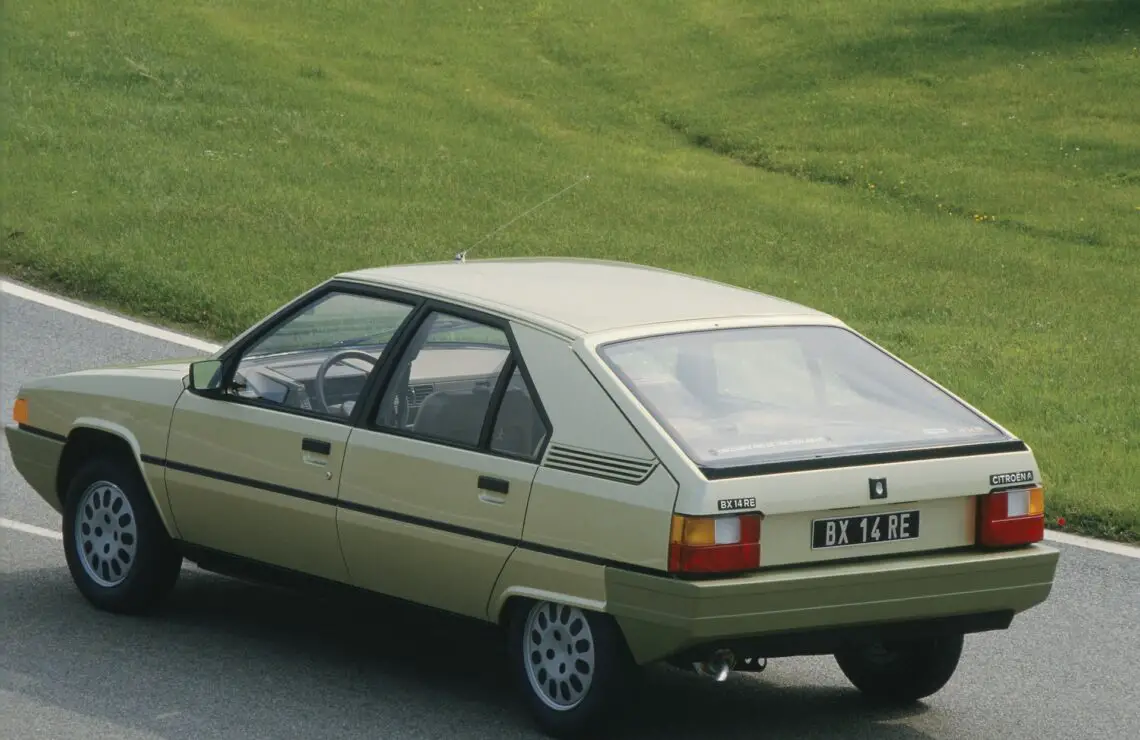
Challenges
Of course, there were also challenging periods, such as the economic crisis in the 1930s and World War II and most recently the corona crisis.
But time and again Citroën showed resilience.
Just recently Citroën showed the bold concept model oli of which several elements can be found on the new, all-electric ë-C3.
With Citroën’s new design language, the new Citroën C3 and the all-electric ë-C3 are characterful models in the B-segment and will be in Dutch showrooms from late September and late October, respectively.
Citroën wants to make electric mobility accessible to everyone and is offering the ë-C3 – with a range of up to 320 kilometers, the possibility of 100 kW fast charging, excellent equipment and the highest comfort in the segment – at the attractive price starting at €24,290 incl VAT/BPM.
The non-electric new C3 is available from € 21,690 incl VAT/BPM.
Soon Citroën will also add the new C3 Aircross (also as a seven-seater) and the all-electric ë-C3 Aircross to the range.
This spacious and comfortable B segment SUV is available in the gasoline version from €25,850 incl VAT/BPM and electric from €27,390 incl VAT/BPM.
Stellantis
In April 1976, Citroën became part of the PSA Group, leading to enhanced innovation and further growth of the brand.
In 2021, PSA Group merged with Fiat Chrysler Automobiles (FCA) to form Stellantis – now one of the world’s largest mobility providers.
Under the Stellantis banner, Citroën continues to market innovative and distinctive models, with an unchanged strong focus on distinctive design, impressive comfort and accessibility for the general public.
Peter van Mourik, Managing Director Citroën Nederland, said, “The 100th anniversary of Citroën’s factory branch in the Netherlands is not only a moment of pride for us, but also an opportunity to reflect on the deep relationships we have built with our customers and partners.
Since the opening of our first branch in Amsterdam in 1924, we have always strived for innovation with the aim of designing cars that are functional but also evoke emotion.
Be it the revolutionary Traction Avant, the iconic 2CV or the progressive DS – Citroën has always occupied a unique place in the hearts of Dutch motorists.
This milestone is also a moment of reflection.
We have experienced countless highs as a brand, but also several lows after which we have always managed to recover, by remaining true to our core values: innovation, comfort and accessibility.
Over the next hundred years, we are also committed to providing sustainable, distinctive and affordable mobility solutions.
The new Citroën ë-C3 is a telling example.
With this model, we show that 100% electric driving can be cheaper, without sacrificing comfort and equipment.
We thank our customers for their years of trust and look forward to Citroën’s next century in the Netherlands.”


